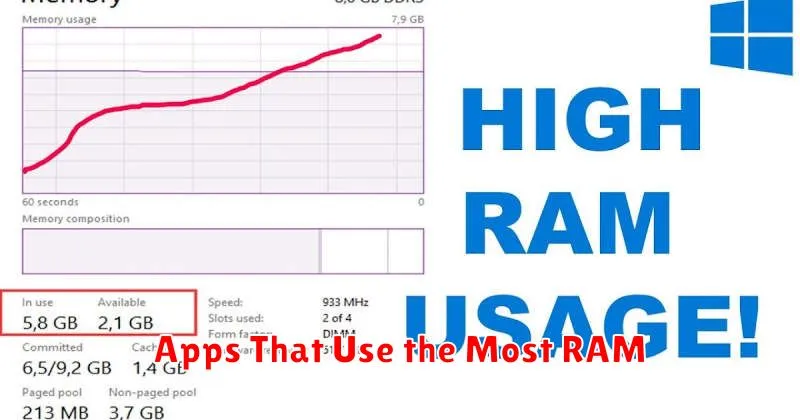In today’s fast-paced digital world, smartphones have become indispensable tools for communication, productivity, and entertainment. A critical factor influencing smartphone performance is RAM, or Random Access Memory. Understanding how smartphone RAM affects your device’s speed, multitasking capabilities, and overall user experience is crucial for making informed purchasing decisions and optimizing your phone’s performance. This article delves into the intricacies of smartphone RAM, explaining what it is, how it works, and why it’s essential for a smooth and efficient mobile experience. We’ll explore the relationship between RAM and performance, discussing how different amounts of RAM can impact app loading times, multitasking efficiency, and overall system responsiveness.
From browsing the web and checking emails to playing graphically demanding games and running multiple apps simultaneously, our reliance on smartphones continues to grow. As the demands on our devices increase, so too does the importance of understanding the underlying hardware that powers them. This article will equip you with the knowledge to understand the role of RAM in smartphone performance. By the end, you will be able to confidently assess your RAM requirements, choose a device with the right amount of RAM for your needs, and effectively manage your phone’s RAM usage for optimal performance. We will also explore how RAM affects different types of smartphone usage, from casual browsing to intensive gaming, so you can choose the right phone for your needs.
What Is RAM in Smartphones?
RAM, or Random Access Memory, is a crucial component in any smartphone. It acts as the device’s short-term memory, storing data that the phone needs to access quickly. Think of it as the phone’s working space.
When you open an app, the necessary files and instructions are loaded from the phone’s storage into the RAM. This allows the processor to access and execute them rapidly. The more RAM a phone has, the more apps and processes it can hold simultaneously without slowing down.
Unlike internal storage (like a hard drive), RAM is volatile memory. This means that when the phone is powered off, all data stored in RAM is erased. It’s important to distinguish between RAM and storage. Storage holds files, apps, and other data permanently, while RAM holds data temporarily for immediate use.
The amount of RAM in a smartphone is measured in gigabytes (GB). Modern smartphones typically come with 4GB, 6GB, 8GB, or even more RAM. The amount you need depends on your usage. More demanding tasks like gaming or video editing benefit from more RAM.
How RAM Affects Multitasking
RAM, or Random Access Memory, plays a critical role in your smartphone’s ability to multitask effectively. Think of RAM as your phone’s short-term memory. It holds the data and instructions for the apps you’re currently using or have used recently.
When you open an app, its data is loaded into RAM. This allows for quick access and smooth operation. With more RAM, your phone can hold more apps in this ready-to-use state. This means you can switch between multiple apps without experiencing lag or needing to reload them from storage.
With insufficient RAM, the phone’s operating system will start closing background apps to free up space for the active app. This is why you might find an app restarting when you switch back to it after using other apps. This process, often called “killing” apps, negatively impacts the multitasking experience.
The more RAM your phone has, the more apps it can keep active simultaneously, leading to a smoother and more responsive multitasking experience. You’ll be able to switch between games, social media, messaging apps, and more without significant performance slowdown.
RAM vs Storage Explained
Random Access Memory (RAM) and storage are both crucial components in a smartphone, but they serve distinct purposes and have different characteristics. Understanding these differences is key to comprehending smartphone performance.
RAM is the smartphone’s short-term memory. It holds data that the phone actively uses, allowing for quick access by the processor. The more RAM a phone has, the more apps and processes it can handle simultaneously without slowing down. When you close an app, the data is cleared from RAM.
Storage, on the other hand, is the phone’s long-term memory. This is where your operating system, apps, photos, videos, and other files reside permanently. Storage can be internal (built-in to the device) or external (such as a microSD card). Unlike RAM, data in storage remains even after the phone is powered off.
| Feature | RAM | Storage |
|---|---|---|
| Volatility | Volatile (data lost when power is off) | Non-volatile (data retained when power is off) |
| Speed | Very fast | Slower than RAM |
| Purpose | Running apps and processes | Storing files and data |
RAM Management in Android and iOS

Both Android and iOS employ distinct strategies for managing RAM, impacting app performance and overall user experience. RAM, or Random Access Memory, serves as the temporary storage for actively running apps and processes. Efficient RAM management is crucial for a smooth and responsive smartphone.
Historically, Android adopted a more liberal approach to RAM usage, prioritizing keeping apps open in the background for quick access. This strategy, while convenient, sometimes led to performance degradation under heavy multitasking. iOS, on the other hand, took a stricter stance, proactively closing background apps to free up resources. This approach prioritized performance and battery life, potentially at the expense of immediate access to previously used applications.
Modern versions of both operating systems have evolved, incorporating more intelligent RAM management techniques. Both now leverage algorithms that prioritize crucial system processes and frequently used apps, adaptively adjusting resource allocation based on user behavior. This allows for a balance between quick app access and efficient resource utilization.
Apps That Use the Most RAM

Certain types of apps are known to consume significant amounts of RAM. Social media platforms, with their constant updates and background processes, are often high on the list. Similarly, gaming apps, particularly those with complex graphics and online multiplayer features, demand substantial RAM to function smoothly. Navigation apps, which require real-time location tracking and mapping data, also contribute to RAM usage.
Beyond app categories, the specific design and functionality of individual apps play a role. Feature-rich apps with numerous integrated services are likely to utilize more RAM than simpler, more streamlined applications. Also, apps that run multiple processes in the background, such as music streaming or cloud syncing services, can significantly impact RAM availability.
Users should also be mindful of the number of apps running concurrently. Keeping multiple apps open in the background, even if minimized, contributes to overall RAM usage and may lead to performance slowdown if total RAM capacity is approached. Regularly closing unused apps can help free up RAM and maintain optimal device performance.
Cleaning RAM: Does It Help?
Many apps claim to boost performance by “cleaning” your phone’s RAM. But does this practice actually provide any tangible benefits? The short answer is: not usually.
Modern operating systems, like Android and iOS, are designed to manage RAM efficiently. They dynamically allocate RAM to apps that need it and reclaim memory from inactive or unused apps. Actively cleaning RAM often interferes with this process and can even hinder performance.
While having some free RAM is essential, constantly striving for maximum free RAM is counterproductive. The system knows how to utilize available memory effectively. Forcing apps to close prematurely can actually lead to increased battery drain as the system needs to reload them later.
In most cases, manually cleaning RAM is unnecessary. It’s better to let the operating system manage memory on its own. Only in rare instances, such as when an app malfunctions and consumes excessive memory, might manual intervention be beneficial.
Best RAM Sizes for Daily Use
Choosing the right amount of RAM for your smartphone depends largely on your typical usage. For average daily use, such as web browsing, social media, and light multitasking, 4GB of RAM is generally sufficient. This amount allows for smooth performance without significant lag.
For a more demanding user who engages in moderate multitasking, gaming, or uses more resource-intensive applications, 6GB or 8GB of RAM is recommended. This ensures a fluid experience even when switching between multiple apps or playing graphically demanding games.
Power users who regularly engage in heavy multitasking, high-end gaming, or professional applications like video editing should consider 8GB of RAM or higher. This higher capacity ensures smooth performance even under the most demanding workloads.

